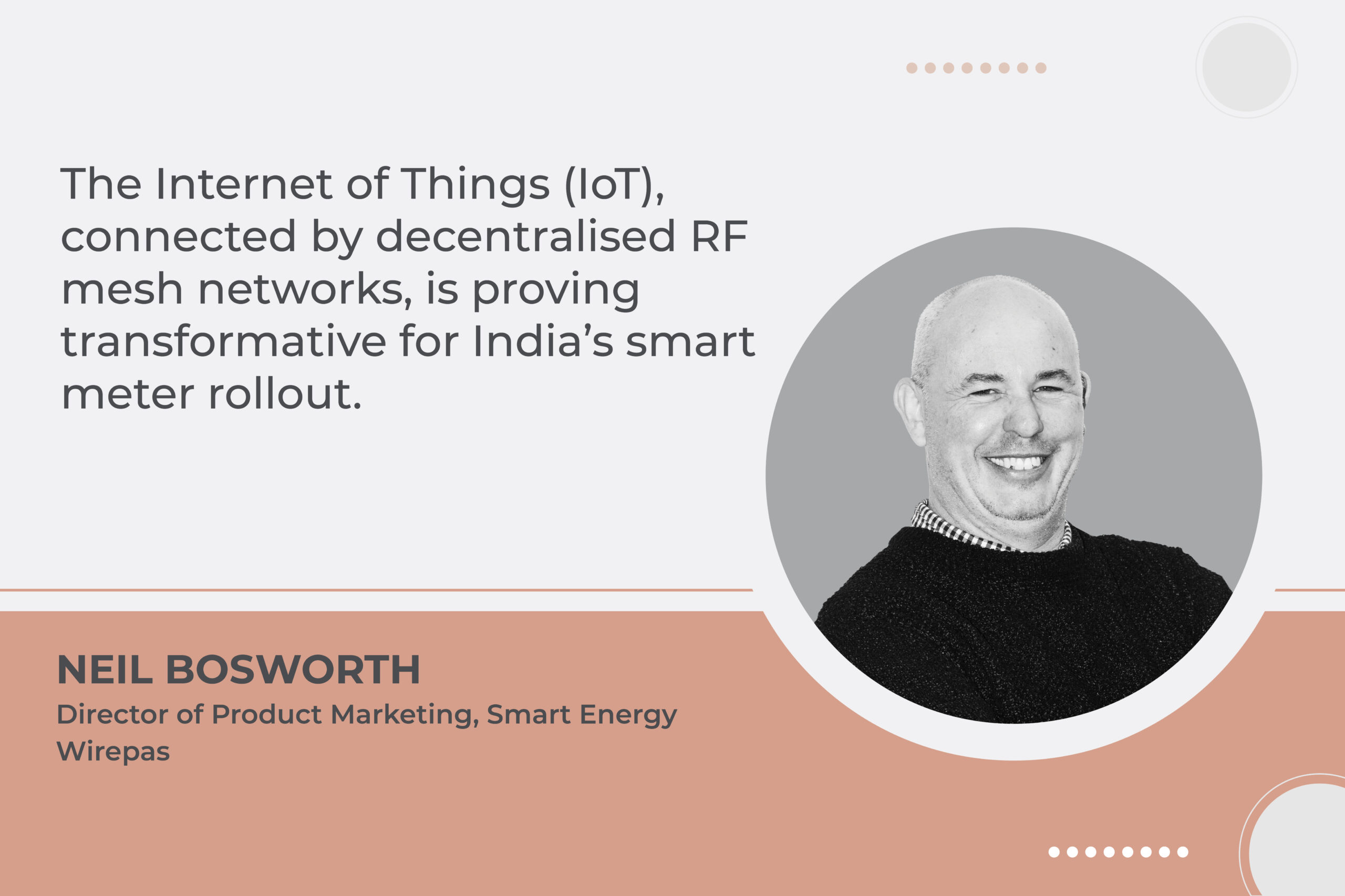Bridging urban-rural energy divide with IoT connectivity
By Staff Report October 4, 2025 6:20 pm IST
By Staff Report October 4, 2025 6:20 pm IST

The Internet of Things (IoT), connected by decentralised RF mesh networks, is proving transformative for India’s smart meter rollout.
Energy access and reliability remain two of the most pressing challenges in emerging economies. While cities struggle with dense populations and surging energy demand, rural and remote communities often face unreliable supply and limited data connectivity, which are essential for smart metering. Both scenarios highlight the same problem: how to ensure efficient, scalable, and affordable energy management. This is where the Internet of Things (IoT), connected by decentralised RF mesh networks, is proving transformative for India’s smart meter rollout.
Connectivity challenges
Few places better illustrate the challenges of connectivity than Dharavi in Mumbai. With nearly one million people crammed into just 2.1 square kilometres, it is one of the world’s most densely populated urban neighbourhoods. Thousands of households and small businesses coexist in an area where the population density can reach 450,000 people per square kilometre, the equivalent of 7,500 people living on a cricket pitch.
When a redevelopment project introduced nearly 50,000 smart electricity meters into just one square kilometre of Dharavi, it exposed a key weakness of traditional cellular networks. Just as anyone at a packed stadium has struggled to get a mobile signal, Dharavi’s smart meters quickly ran into bottlenecks: too many devices competing for limited bandwidth. Even advanced cellular standards, such as Narrowband IoT, were unable to deliver the reliable data transmission utilities required.
Wirepas’ decentralised mesh technology offered a different approach. Instead of relying on additional cell towers and base stations to improve service, each smart meter acts as an RF mesh node, while dual communication meters include cellular LTE connectivity. These dual-communication meters are installed at strategic sites with strong cellular coverage. Household meters pass their data from one neighbour to the next until it reaches a dual-communication meter. From there, the aggregated data is sent over a single LTE connection to the utility’s Head End System.
In Dharavi, this means an entire block of households requires only one cellular connection. The result is efficient, scalable communication that benefits from extreme density. Utilities no longer need to dispatch teams for manual readings, and consumers benefit from more accurate billing and improved grid reliability. In short, reliable IoT connectivity has turned a dense urban challenge into a showcase for smart energy management.
High-rise living a connectivity hurdle
Urbanisation in India is accelerating, with millions moving from rural areas into cities every year. To house this population, developers are rapidly constructing multi-story apartment blocks. These dense, vertical environments introduce a different connectivity problem as smart meters are often installed together in basements or metering rooms, where radio noise and poor signal penetration undermine cellular performance, and few meters manage to establish a connection.
Wirepas mesh offers a simpler and more secure solution. Inside a metering room, the smart meters automatically form a local mesh, with only one device needing to establish a reliable route outside. This setup reduces cost, minimises maintenance, and ensures tamperproof communication.
Extending connectivity to rugged rural landscapesA similar concept can be applied to rural extremes, perfectly represented by Ladakh. Surrounded by mountains, with low population density and minimal mobile network investment, many villages struggle with weak or non-existent cellular coverage. For smart metering, these conditions are highly unfavourable. Unlike a cell phone, meters cannot be moved to improve signal strength, and long external antennas are neither practical nor secure.
Here again, RF mesh excels. Each installed smart meter strengthens the network by relaying data for its neighbours. Even when cellular coverage is limited to a single building or hillside, one meter with both cellular and RF mesh capabilities can extend connectivity to the entire valley. The result is a resilient, low-cost communication layer that ensures households and businesses in remote areas are not excluded from modern energy services.
By turning every device into part of the network, mesh technology democratises access. It enables utilities to extend smart metering and reliable billing to areas where traditional infrastructure investment is uneconomical. In doing so, it narrows the gap between urban environments and underserved rural regions.
Conclusion
The urban–rural energy divide is as much about connectivity as it is about electricity. From the crowded alleys of Dharavi to the remote valleys of Ladakh, mesh networks are enabling smarter, more inclusive, and more sustainable energy systems. By making connectivity affordable, resilient, and scalable, IoT is not just improving grids; it is driving a fairer energy future for all.
*************************
Authored by:
Neil Bosworth, Director of Product Marketing, Smart Energy- Wirepas
We use cookies to personalize your experience. By continuing to visit this website you agree to our Terms & Conditions, Privacy Policy and Cookie Policy.